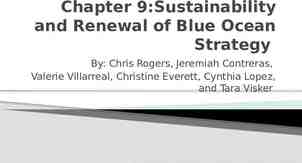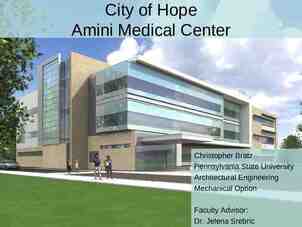COMPOSITE MATERIAL FIRE FIGHTING Presented to: International Aircraft
17 Slides6.69 MB
COMPOSITE MATERIAL FIRE FIGHTING Presented to: International Aircraft Materials Fire Test Working Group Pooler, GA, USA Presented by: John C. Hode SRA International Date: March 1-2, 2011 Federal Aviation Administration
Development of a Fire Test Method Purpose: Create a repeatable test method to quantitatively assess the amount of fire fighting agent necessary to extinguish aircraft structural materials. First objective: Second objective: Determine the conditions for self-sustained fire. Develop a method to apply various fire suppression agents. Establish the quantity of agent (water & foam)necessary to extinguish a self-sustaining aircraft fire. Determine the effectiveness of various agents. Airport Technology Research & Development Branch March 1-2, 2011 Federal Aviation Administration 2
Initial Test Set-up Airport Technology Research & Development Branch March 1-2, 2011 Federal Aviation Administration 3
Small & Intermediate Scale Testing Baseline intermediate scale tests conducted to see if results from initial test design are repeatable. Small scale tests – ASTM E1354 Cone Calorimeter Data to support exterior fuselage flame propagation/spread modeling – ASTM E1321 Lateral Flame Spread Testing (Lateral flame spread) Airport Technology Research & Development Branch March 1-2, 2011 Federal Aviation Administration 4
Small & Intermediate Scale Materials Carbon Fiber Reinforced Plastic (CFRP) – Unidirectional T-800/350oF cure epoxy, 16 ply quasiisotropic [0,-45,45,90]S2, nominal thickness of 3.2 mm (0.126 inch) Finished 60/40 fiber-resin Glass Fiber Reinforced Aluminum (GLARE) – GLARE 3-5/4-.3, 2.5 mm (0.098 inch) total thickness Oriented Strand Board (OSB) – Georgia Pacific Blue Ribbon , nominal thickness of 14.7 mm (0.578 inches) – Flame spread rating of 150-200 Airport Technology Research & Development Branch March 1-2, 2011 Federal Aviation Administration 5
Composite Skin Fire Characteristics and Suppression Approach – Small scale materials testing – Results feed into fire model of combustion and propagation – Intermediate scale tests Reduce reliance on large tests – Materials Carbon/Epoxy (CFRP -B787) Aluminum/Glass (GLARE – A380) Surrogate – (wood board) Airport Technology Research & Development Branch March 1-2, 2011 Federal Aviation Administration 6
ASTM E1321 Lateral Ignition & Flame Spread Wood was the only material in which lateral flame spread was observed CFRP and GLARE – some burning at seams OSB CFRP GLARE Airport Technology Research & Development Branch March 1-2, 2011 Federal Aviation Administration 7
Small Scale Tests - Combustibility Composite Skin Materials Have Similar or Lower Combustible Properties compared to “Ordinary” Combustibles Sample Compared to wood, OSB composites: CFRP – Require more imposed energy to ignite GLARE – Ignite slower – Have a shorter duration of burning( due to smaller thickness) Airport Technology Research & Development Branch March 1-2, 2011 For 100 kW/m2 Exposure Minimum Heat Flux for Ignition (kW/m2) Tim to Ignition (sec) Burning Duration (sec) Avg. HRR (kW/ m2) 12 8 490 172 16 29 113 153 25 82.5 129 66.5 Federal Aviation Administration 8
OSB Exposed to Large Area Burner with Insulation Backing Large Area Burner On Burner Off – 0 seconds Burner Off – 60 seconds Airport Technology Research & Development Branch March 1-2, 2011 Burner Off – 30 seconds Burner Off – 100 seconds Federal Aviation Administration 9
CFRP Exposed to Torch Burner with Insulation Backing Torch Ignition 2.5 minutes after ignition 1 minute after ignition 4 minutes after ignition Torches Out Airport Technology Research & Development Branch March 1-2, 2011 1.5 minutes after ignition 15 seconds after torches out Federal Aviation Administration 10
Comparison of CFRP & OSB Heat Release Airport Technology Research & Development Branch March 1-2, 2011 Federal Aviation Administration 11
CFRP Torch Test Exposure 180 kW/m2 Duration 250 seconds (4 min 10 sec) Panel Ignition at 16 seconds HRR increased after ignition to peak of 300 kW over 60 seconds HRR decayed after 90 seconds to steadystate value of 50 kW Post-exposure burning for 37 seconds Airport Technology Research & Development Branch March 1-2, 2011 Federal Aviation Administration 12
Intermediate Scale Test Conclusions OSB vs. CFRP – Both materials burn and spread flame when exposed to large fire – Heat release rates and ignition times similar – The thicker OSB contributed to longer burning Airport Technology Research & Development Branch March 1-2, 2011 Large Scale Implications – OSB might be used as a surrogate for CFRP – Flaming and combustion does not appear to continue after exposure is removed Since there was no or very little post exposure combustion, no suppression tests performed as planned Minimal agent for suppression of intact aircraft? Federal Aviation Administration 13
Qualifiers to Intermediate Scale Results Need to check GLARE – No significant surface burning differences anticipated ( may be better than CFRP) Verify /check CFRP for thicker areas (longer potential burning duration) Evaluate edges/separations – – – – Wing control surfaces Engine nacelle Stiffeners Post –crash debris scenario Can a well established fire develop in a post-crash environment? Airport Technology Research & Development Branch March 1-2, 2011 Federal Aviation Administration 14
Overall Findings from Initial, Small and Intermediate Scale Flame propagation and self-sustained flaming does not significantly occur in the absence of external fire source. Epoxy off-gas is combustible. CFRP can smolder. Epoxy off-gas causes composite to swell through internal pressurization. OSB is potential surrogate for large scale tests to assess extinguishment test methods to save composites for data collection. Airport Technology Research & Development Branch March 1-2, 2011 Federal Aviation Administration 15
Scoping tests of parallel configuration FIRST IDEA FOR COMPLEX GEOMETRY FIRE TEST SETUP ACTUAL CONFIGURATION USED IN SCOPING TEST Airport Technology Research & Development Branch March 1-2, 2011 0.5 inch Oriented Strand Board (OSB) 9.5in x 24in and spaced 1” apart Ignition within 30 seconds Developed after 30-40 seconds then exposing flame secured Flames grew above rig Manual extinguishment after 1 minute Reignition occurred requiring second agent application for longer duration to completely suppress Federal Aviation Administration 16
Participation welcome Soliciting comments and ideas on: – Potential test configurations – Previous testing results and data – Sources for aviation-grade carbon fiber composites and FML – Other helpful ideas Airport Technology Research & Development Branch March 1-2, 2011 Federal Aviation Administration 17






















